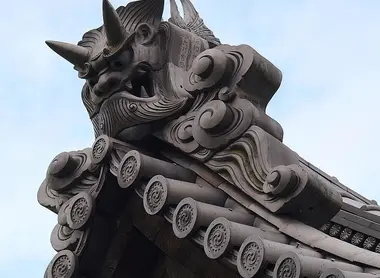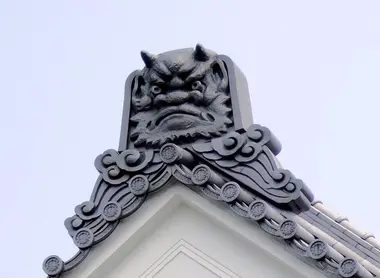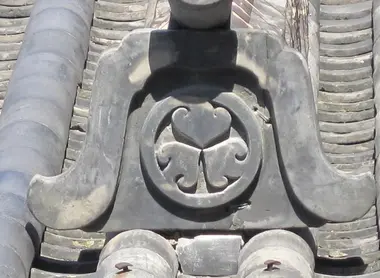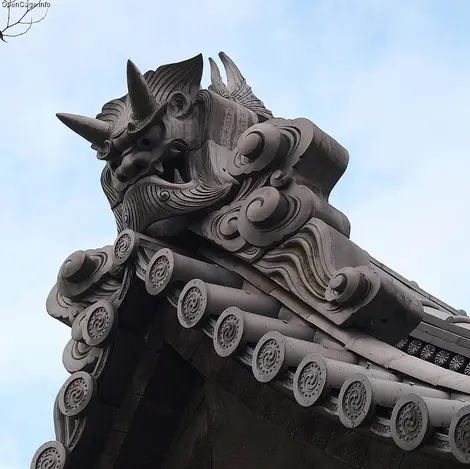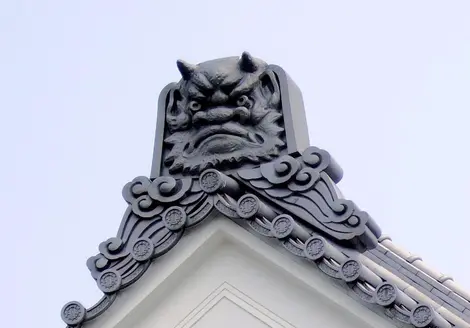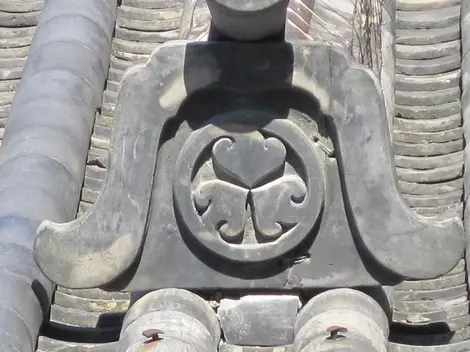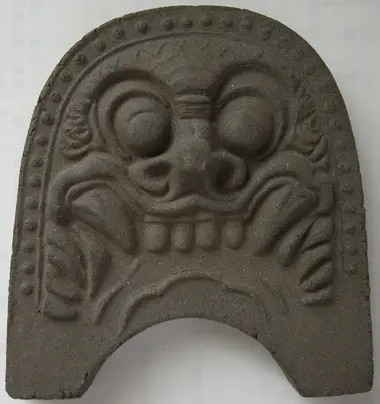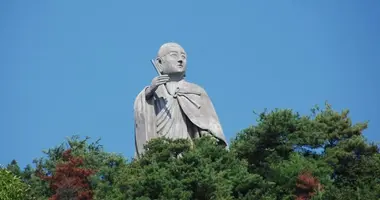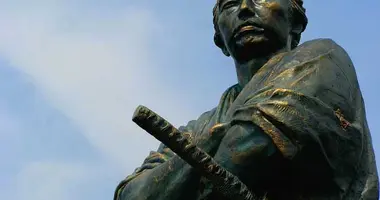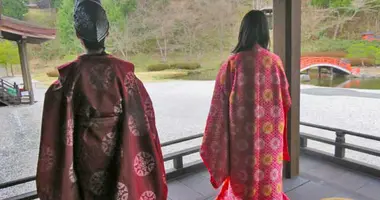Onigawara, architectural demon 鬼瓦
- Published on : 30/08/2018
- by : M.H.
- Youtube
Demons to drive away misfortune
In traditional Japanese architecture, onigawara adorns the roofs of buildings. These tiles take on the face of a Japanese demon, more commonly called oni.
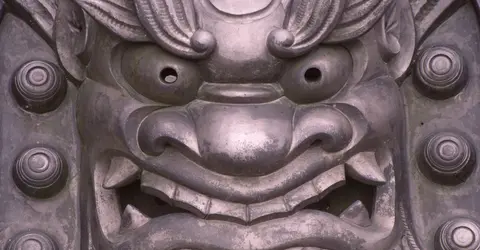
The face of the demon
Wiki
The demon at the corner of the roof
Next time you visit a temple in Japan, don't just admire the pagodas and statues that have their feet on the ground. Raise your head and decipher the architecture of the roof of the building. A spooky face might stand out at the top. These tiles, named onigawara (literally "tile demon"), are guardians of the building.
Japanese believe the gods descend to earth and land on the highest part of temples. Thus, it is decorated and venerated to welcome the celestial deities. The onigawara are put in place to guard and protect the post of the gods. They act as a talisman and prevent evil spirits from entering buildings, allowing only happiness to enter.
Discover: Temples and shrines in Japan
An oni is a very popular creature in Japanese folklore. It is found in legends, arts, literature, and even theater. Represented as a giant humanoid with a frightening appearance and titanic strength, but also equipped with claws and horns, the oni does not inspire sympathy, and we would not want it at home. However, initially, the creature protected humans from other evil spirits. Thus the Japanese rely on them and their magical powers to act as guardian angels in the same way as the gargoyles found here.
From Nara
At the end of the 6th century, a tile master came from Korea to share his knowledge. Soon the first temple with a tiled roof was built in Asuka, the very first historical capital of Imperial Japan, south of Nara. . Also considered the forerunner of Buddhist temples in Japan, the Asuka-dera temple saw the birth of the onigawara, but at that time the motif was a lotus flower.
It is, therefore, in the city of deer that the first demon-headed onigawara were made when the Heijo palace and the temples of Heijokyo, the former name of Nara when it was the imperial capital in the 8th century, were built. These onigawara are now in the palace museum.
Read: Heijo Palace
Manufacturing and expansion
Until the 12th century, onigawara were made by pressing clay into a mold, but the mode of production was changed, and they were then shaped by hand. The great temples of Nara even had their specialized artisans. The Tachibana clan craftsman working at Horyuji Temple is said to be the first to make a three-dimensional two-horned onigawara. The methods further evolved over the following centuries to lead to the onigawara as it is today prevalent across the country.
For a long time, onigawara were only installed on the roofs of temples, palaces, or castles. At the time, houses had no use for it since most were thatched. But from the end of the Edo period (1603-1868), tiled roofs were preferred, as they were resistant to frequent fires. Also, we avoided installing onigawara with oni faces on the top of private residences because the demon looked askance at the neighbor's house.
